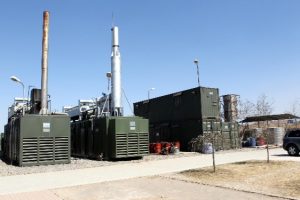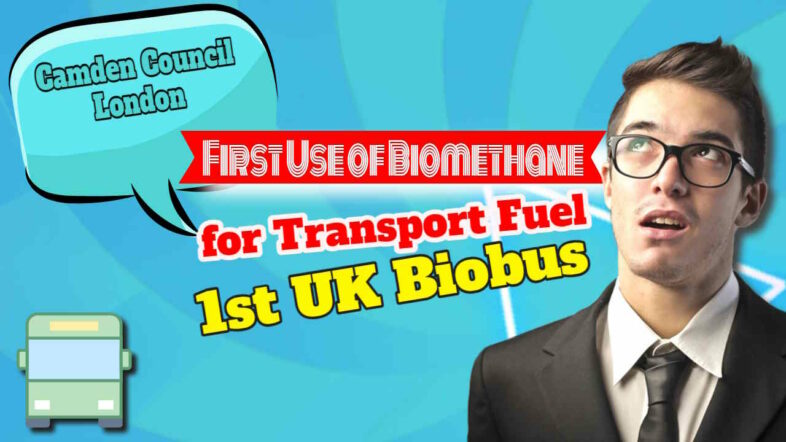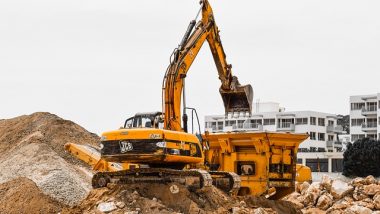The historic first use of biomethane (now known as rCNG) in a council vehicle in the UK was in the London Borough of Camden. The fuel is now increasingly used for powering buses. The main reason for using it is its comparatively clean burning characteristics, which means fewer exhaust fumes and lower air pollution, making it a far cleaner fuel than diesel.
In order to power vehicles, biogas must be purified and compressed. When improved (upgraded) to natural gas standards, it is known as biomethane and can be utilised in the same way as natural gas is.
Back in 2008, we published the Press Release below. We titled the article: “New Era for Landfill Gas Use Dawns”. It turns out that we were right. Now in 2023, we are pleased to be able to update this article with the new title and confirm that the trial was successful. Camden Council continues to use biomethane produced by upgrading biogas (landfill gas) to rCNG (renewable compressed natural gas) to fuel its vehicle fleet. Furthermore, it has continually enlarged its biogas-derived biomethane fuel fleet.
The following extract explains the use of liquid biomethane gas to fuel the Council's vehicles:
The London Borough of Camden runs 25 gas-fuelled vehicles from its Transport Services depot just north of King’s Cross Station. The depot’s gas refuelling station is also publicly accessible, with vehicles from Laing O’Rourke, Balfour Beatty, Waitrose and Islington Borough Council all making use of it.
“Our primary motivation for getting gas vehicles is for improved air quality”,
explained Poppy Lyle of the air quality team,
“but the fact that it was cost-effective and had a CO2 benefit as well helped it all stack up.”
Camden has recently updated their pioneering fuel policy and has around 100 vehicles up for replacement, so they expect to be buying quite a few more gas vehicles soon.
via GasHub
Historic Press Release:
London's First Biogas Fuelling Station Installed at the London Borough of Camden's York Way Depot
LONDON, October 2008 /PRNewswire/ —
Gasrec Commercial Trial With Veolia and Iveco Enters Next Phase
In August, Gasrec, the UK's first commercial producer of liquid biomethane fuel, Veolia Environmental Services, the UK's largest waste management company, and full-range commercial vehicle manufacturer Iveco, announced the beginning of a commercial trial of a CBM-powered street cleansing vehicle in Camden that could drastically reduce society's reliance on fossil fuels.
Further to that announcement, Gasrec and The London Borough of Camden today announce Gasrec's successful installation of London's first biogas fueling station at the Borough Council's York Way Depot to support the trial. The facility is capable of providing the trial Iveco Daily vehicle with fuel for its 60-mile-per-day route for an initial period of six months. Gasrec was supported in the project by their fuel logistics partner the Hardstaff Group and by technology consultant Igas.

This step allows for more convenient refuelling for the trial vehicle and highlights the suitability of compressed liquified biomethane for back-to-base operations. It also widens the scope of the trial to allow evaluation of a complete, scalable solution and provides the opportunity for the Borough Council to fuel vehicles in its own fleet from the York Way Depot.

Richard Lilleystone, Chief Executive Officer at Gasrec, said:
“This step makes concrete the infrastructure for our trial and also lays the foundations for possible further collaboration with Camden Council. In doing so, it helps underscore the potential for further commercial fleets, both within additional London Boroughs and other key UK locations, to follow in Veolia and Camden's footsteps conveniently and above all economically.”
While the environment remains of prime concern, at the present time cost is a more important planning and management concern than ever, and Gasrec is pleased to be able to offer help to its partners in managing both their emissions and their budgets.
“It is also important for the UK to minimise the substantial sums of money exported to purchase vehicle fuel from abroad and this small but significant step will hopefully help pave the way by using fuel sources that are not only homegrown but also carbon neutral, to the benefit of society as a whole.”
Cllr Chris Knight, Camden Council's Executive Member for Environment, said:
“Improving the environment and tackling climate change are top priorities for Camden Council. The opening of the capital's first bio-gas re-fuelling station here in Camden is a massive achievement as biomethane is seen as one of the most climate friendly fuels around today. If this trial proves successful we aim to fuel part of Camden Council's own fleet, helping to protect the environment and save money. We always encourage our contractors to deliver their services in environmentally friendly ways and this is a perfect example of this ethos being brought to life.”
Note: The original link to the PR source is no longer available.
Other First Users of Biomethane
The first recorded use of biomethane as a vehicle fuel was in 1899 when the Swedish engineer, Gustaf Dalén, used it to power a street lamp. However, the use of biomethane as a vehicle fuel did not become widespread until the 1990s.
The first large-scale use of biomethane as a vehicle fuel was in Lille, France in 1989, where a fleet of buses was converted to run on biomethane. Since then, biomethane has been increasingly used as a vehicle fuel in Europe, particularly in Sweden, Germany, and the UK.
In the United States, the first use of biomethane as a vehicle fuel was in 1982, when the city of Flint, Michigan, began using it to power municipal vehicles.
However, the use of biomethane as a vehicle fuel in the US has been limited, and it is only in recent years that interest in biomethane as a transportation fuel has increased.
[First published 21 October 2008. Updated 2020, and again April 2023.]





